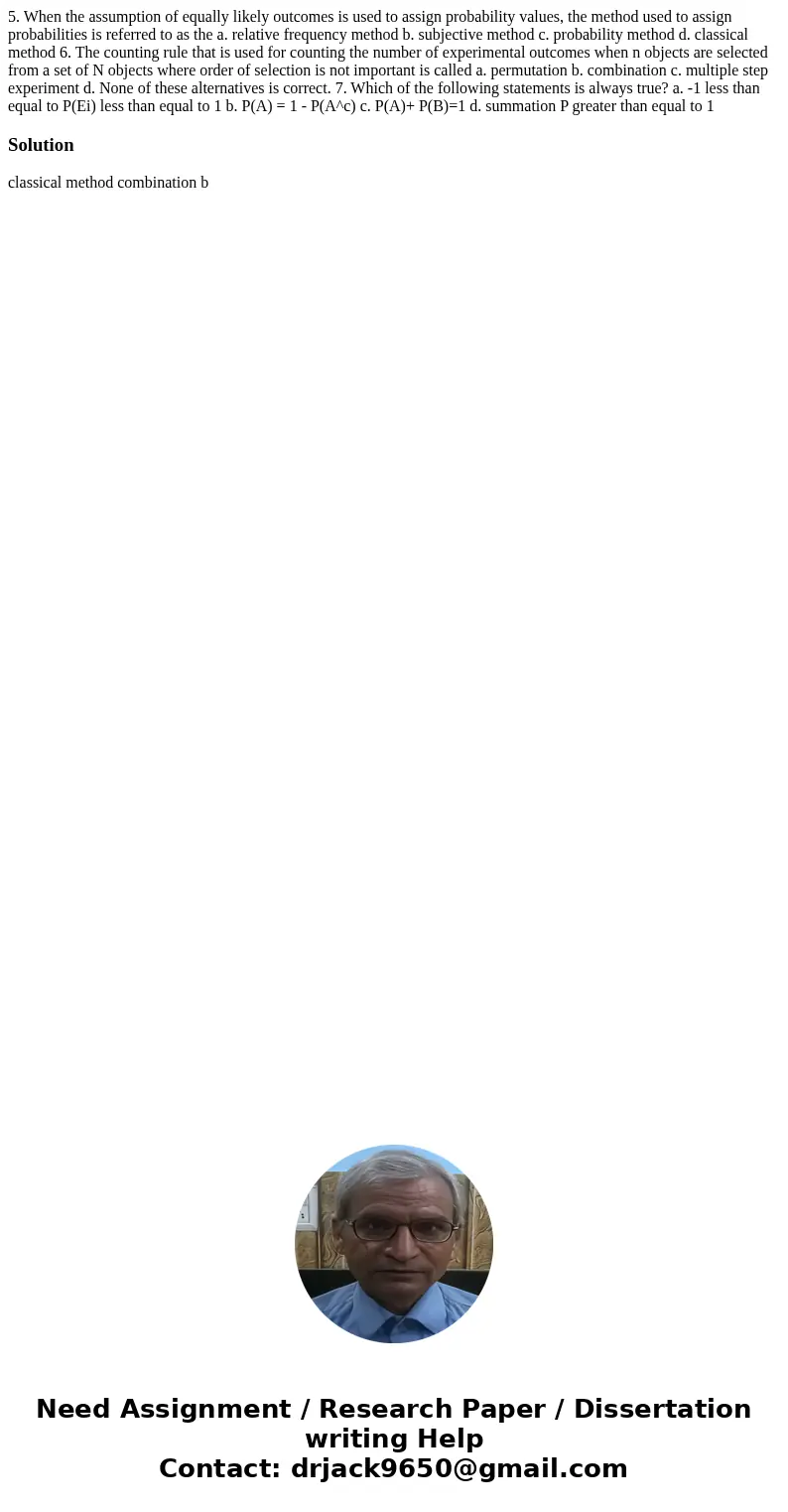5 When the assumption of equally likely outcomes is used to
5. When the assumption of equally likely outcomes is used to assign probability values, the method used to assign probabilities is referred to as the a. relative frequency method b. subjective method c. probability method d. classical method 6. The counting rule that is used for counting the number of experimental outcomes when n objects are selected from a set of N objects where order of selection is not important is called a. permutation b. combination c. multiple step experiment d. None of these alternatives is correct. 7. Which of the following statements is always true? a. -1 less than equal to P(Ei) less than equal to 1 b. P(A) = 1 - P(A^c) c. P(A)+ P(B)=1 d. summation P greater than equal to 1 
Solution
classical method combination b
 Homework Sourse
Homework Sourse